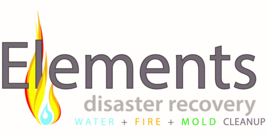Whether you have found small patches are have had to deal with a full-blown outbreak, every homeowner has encountered mold at some point or another. Mold thrives in damp, dark, humid conditions and there are countless locations in your home where spores can spread. Not only does mold look unattractive but it can cause damage to your property, your belongings and even pose a threat to your health.
Although mold growth in homes is extremely common, many homeowners don’t know too much about these harmful growths. As the old adage goes, “knowledge is power” and having a better understanding of the nuances of mold will help you to take the right approach to manage mold in your home moving forward. While you certainly don’t need to be a mold expert to control mold in your home, being informed about mold and how it develops and spreads will help you to keep your home, belongings and health protected moving forward.
Let’s take a look at some mold facts that you might not have known so you have a better understanding of what you are dealing with.
Mold Exists Everywhere
Mold is a kind of fungi that exists everywhere in the outdoors environment. However, mold spores can get into your home through open windows, doors, vents, air ducts, shoes, and a range of other ways. Mold plays a crucial role in the decomposition of organic matter and while most types of mold are harmless, it becomes a problem when spores start to grow inside your home.
There Are Many Types Of Mold
There are more than 100,000 different types of mold that we know of. The majority of these mold types exist outdoors and are not harmful. In fact, some types of mold are even used in medicine. However, the mold that you find in your home can indeed be harmful and includes varieties such as Alternaria, Cladosporium, Penicillium Stachybotrys, and Aspergillus.
Growth On A Variety Of Surfaces
Moisture-prone areas of your home such as bathrooms, kitchens, and dark cabinets are ideal for mold to thrive. However, while mold will be more likely to grow on porous or organic surfaces, it can grow elsewhere too. For example, while mold is unable to grow on non-organic surfaces such as concrete, it can still develop on layers of dirt or dust that coat non-organic surfaces.
It Grows Very Quickly
Once mold is present in your home, it can grow and spread quite quickly. In fact, mold can begin to grow in as little as twenty-four to forty-eight hours in optimal conditions. Temperatures of 77 °F to 88 °F are perfect for mold to thrive and when coupled with a food source and moisture, it can be very difficult to get mold under control without professional help so be sure to take action quickly if you suspect you have a mold issue.
Get In Touch With Our Mold Removal Experts At The First Signs Of Mold
If you suspect that mold is growing in your home be sure to get in touch with our team at Elements Disaster Recovery in Jacksonville as soon as possible. With the help of our team, you can be sure that you identify the source of mold growth in your home and solve the issue once and for all, ensuring your home remains a mold-free zone.

